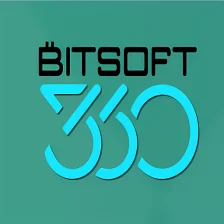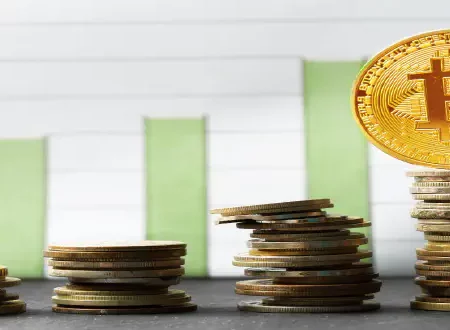If you have ever been curious about how Bitcoin, the world’s most famous digital currency, is actually created, then you have come to the right place. Bitcoin mining is the process by which new Bitcoins are brought into circulation and transactions are securely verified and recorded on the blockchain. However, the process of Bitcoin mining is not as straightforward as it may seem, and it requires a complex network of specialized computers and immense amounts of computational power.
The concept of Bitcoin mining is inspired by the mining of precious metals such as gold and silver. Just as gold miners dig through layers of rock to find precious nuggets, Bitcoin miners use powerful computers to solve complex mathematical problems that validate new transactions and add them to the public ledger, or blockchain. These miners are rewarded with newly minted Bitcoins for their efforts, providing them with an incentive to continue mining and contributing to the security and integrity of the Bitcoin network.
To understand how Bitcoin mining works, it’s important to grasp the concept of the blockchain. The blockchain is essentially a decentralized, public ledger that records every transaction ever made with Bitcoin. It is made up of a series of blocks, each containing a list of transactions. When a miner successfully solves a mathematical problem, they create a new block and add it to the blockchain. This block includes a reference to the previous block, creating a chain. The process of mining and adding blocks to the blockchain ensures that the Bitcoin network remains secure and resistant to tampering.
Bitcoin mining requires specialized hardware, known as ASICs (Application-Specific Integrated Circuits), which are designed to perform the complex calculations required for mining. These ASICs consume massive amounts of electricity and generate a significant amount of heat, often requiring miners to operate in specialized facilities known as mining farms to mitigate these challenges. In addition to the hardware, miners also need access to reliable and high-speed internet connections to ensure optimal performance.
In conclusion, Bitcoin mining plays a crucial role in the creation and maintenance of the Bitcoin network. It is a complex process that involves powerful computers, vast amounts of computational power, and substantial energy consumption. Understanding the process of Bitcoin mining is essential for anyone interested in the world of cryptocurrencies and can provide valuable insights into the mechanics of this innovative technology.
The Origins and Purpose of Bitcoin
Bitcoin was created by an anonymous person or group of people using the pseudonym Satoshi Nakamoto. It was first introduced in a whitepaper titled “Bitcoin: A Peer-to-Peer Electronic Cash System” in 2008. The purpose behind the creation of Bitcoin was to establish a decentralized digital currency that could operate without the need for a central authority, such as a government or financial institution.
One of the key motivations behind the development of Bitcoin was the desire to create a currency that is not subject to central control or manipulation. Traditional fiat currencies are controlled by central banks and governments, which can influence the value and supply of the currency through policies such as monetary easing or tightening. Bitcoin sought to eliminate this centralized control and create a currency that is transparent, secure, and resistant to censorship or manipulation.
Bitcoin also aimed to address the issue of double-spending, which refers to the ability to spend the same amount of money more than once. With traditional digital transactions, such as using a credit card, there is always the risk of double-spending if the same funds are used in multiple transactions. Bitcoin introduced the concept of a decentralized ledger called the blockchain, which records all transactions and ensures that each coin can only be spent once.
The underlying technology behind Bitcoin, known as blockchain, has become widely recognized as a breakthrough innovation. Blockchain is essentially a distributed, decentralized ledger that records all transactions across a network of computers. This technology enables transparency, security, and immutability of data, making it suitable for a wide range of applications beyond just digital currencies, including supply chain management, voting systems, and more.
Overall, the origins and purpose of Bitcoin were rooted in the desire to create a decentralized, transparent, and secure digital currency that is resistant to censorship and manipulation. It has since sparked a global movement towards cryptocurrencies and has paved the way for the development of innovative blockchain-based solutions in various industries.
The Basics of Cryptocurrency
Cryptocurrency is a digital form of currency that uses cryptography for secure financial transactions, control the creation of additional units, and verify the transfer of assets. It is decentralized and operates on a technology called blockchain, which is essentially a public ledger that records all cryptocurrency transactions.
1. Decentralization
One of the key characteristics of cryptocurrency is its decentralization. Unlike traditional currencies, such as the United States dollar or Euro, cryptocurrencies are not controlled by any central authority, such as a government or a financial institution. Instead, they are administered by a peer-to-peer network of computers called nodes.
This decentralization ensures that no single entity has control over the currency, making it more resistant to censorship, manipulation, and corruption. It also means that transactions can be conducted directly between parties, without the need for intermediaries such as banks.
2. Blockchain Technology
Blockchain technology is at the core of cryptocurrencies. It is a distributed ledger that records all transactions across multiple computers, making it highly transparent and secure. Each transaction is verified by multiple nodes and added to a “block” of transactions, which is then added to the chain of existing blocks.
This decentralized nature of the blockchain ensures that no single party can alter or manipulate the transaction history, as the majority of the network must agree on the validity of a transaction. This increases security and reduces the risk of fraud or double-spending.
3. Mining
Mining is the process by which new cryptocurrency coins are created and transactions are verified. Miners use powerful computers to solve complex mathematical problems that validate transactions and add them to the blockchain. In return for their computational efforts, miners are rewarded with newly minted coins.
This process of mining also plays a crucial role in securing the network and preventing attacks. Miners compete to solve the mathematical problems, and the first one to find a solution earns the right to add the next block to the blockchain. This process of proof-of-work makes it computationally expensive and time-consuming for malicious actors to take control of the network.
4. Unique Features
One of the unique features of cryptocurrencies is their ability to facilitate secure and anonymous transactions. Cryptocurrency transactions are pseudonymous, meaning that they are not directly tied to the identities of the parties involved. This provides a level of privacy and anonymity that is not possible with traditional financial systems.
Another feature is the ability to make cross-border transactions quickly and at a relatively low cost. Traditional financial systems often involve high fees and long processing times for international transfers. Cryptocurrencies eliminate the need for intermediaries and can facilitate near-instantaneous transactions at a fraction of the cost.
| Advantages | Disadvantages |
|---|---|
|
|
The Concept of Blockchain Technology
Blockchain technology is at the core of the Bitcoin mining process. It is a decentralized and distributed ledger that records all transactions made using cryptocurrencies. The blockchain is a digital record of these transactions, which are grouped together in blocks and added to the chain in a chronological order.
How does it work?
When a transaction is made using cryptocurrencies like Bitcoin, it is sent to a network of computers known as nodes. These nodes validate the transaction by solving complex mathematical puzzles. Once validated, the transaction is added to a block along with other verified transactions.
Decentralization and distributed nature:
Blockchain technology is decentralized, which means that the record of transactions is not stored in a central authority or server. Instead, it is distributed across multiple computers or nodes, making it highly secure and resistant to hacking or tampering. Each node contains a copy of the entire blockchain, ensuring that no single entity has control over the data.
Immutable and transparent:
Once a transaction is added to the blockchain, it becomes immutable, which means it cannot be altered or deleted. This immutability ensures the integrity and security of the data stored on the blockchain. Additionally, the blockchain is transparent, allowing anyone to view the transaction history. This transparency promotes trust and accountability in the cryptocurrency ecosystem.
Consensus mechanisms:
To maintain the integrity of the blockchain, consensus mechanisms are used. These mechanisms ensure that all nodes in the network agree on the validity of transactions and the order in which they are added to the blockchain. Popular consensus mechanisms include Proof of Work (PoW) and Proof of Stake (PoS).
Benefits of blockchain technology:
Blockchain technology offers several benefits beyond cryptocurrency transactions. It can be used in various industries for secure and transparent record-keeping, supply chain management, smart contracts, and identity verification. The decentralized nature of blockchain reduces the need for intermediaries, streamlining processes and reducing costs.
Conclusion:
Blockchain technology is a revolutionary concept that underpins the Bitcoin mining process. It is a decentralized and transparent ledger that ensures the security and integrity of cryptocurrency transactions. With its potential applications in various industries, blockchain technology is poised to reshape the way we conduct transactions and manage data.
The Role of Miners in the Bitcoin Ecosystem
In the Bitcoin ecosystem, miners play a crucial role in maintaining the network and validating transactions. They are responsible for confirming and adding new transactions to the blockchain, which is the public ledger that keeps track of all Bitcoin transactions.
Transaction Validation
Miners validate transactions by solving complex mathematical problems. These problems are designed to require significant computational power to solve, and they serve as a way to secure the network and prevent fraudulent transactions.
When a transaction is initiated, it is broadcasted to the Bitcoin network, where miners pick it up and include it in a block. Miners then compete with each other to solve the mathematical problem associated with the block. The first miner to solve the problem successfully adds the block to the blockchain and is rewarded with newly minted bitcoins.
Network Security
Miners play a crucial role in maintaining the security of the Bitcoin network. By solving the mathematical problems, they ensure that the blocks added to the blockchain are legitimate. This helps prevent double spending and other fraudulent activities.
Additionally, the mining process is designed to be resource-intensive, making it difficult for any one entity to control the network. The decentralized nature of mining ensures that no single miner or group of miners can manipulate the blockchain for their own gain.
Block Rewards
Miners are incentivized to participate in the mining process through block rewards. Apart from the transaction fees paid by users, miners also receive a set amount of bitcoins as a reward for each block they successfully add to the blockchain.
However, the block reward is designed to decrease over time. This is done to limit the supply of bitcoins and ensure scarcity. As a result, miners must continuously invest in powerful hardware and compete with each other to maintain profitability.
| Role of Miners in the Bitcoin Ecosystem | Description |
|---|---|
| Transaction Validation | Miners validate transactions by solving complex mathematical problems to add them to the blockchain. |
| Network Security | By solving mathematical problems, miners ensure the security and integrity of the blockchain. |
| Block Rewards | Miners receive block rewards in the form of newly minted bitcoins for adding blocks to the blockchain. |
The Hardware and Software Required for Mining
Bitcoin mining requires specialized hardware and software to participate in the network and compete for block rewards. Here are the key components needed for successful mining:
1. Mining Hardware
In the early days of Bitcoin, mining could be done using a regular computer’s CPU (central processing unit) or GPU (graphics processing unit). However, as the network has grown in size and complexity, the computational power required to mine has increased significantly. Today, miners use specialized hardware called ASICs (application-specific integrated circuits) designed specifically for Bitcoin mining. ASICs are much more efficient at solving the complex mathematical puzzles involved in mining.
2. Power Supply Unit (PSU)
Since mining rigs consume a significant amount of electricity, a high-quality power supply unit (PSU) is essential. The PSU provides the necessary power to run the mining hardware, ensuring stable and efficient operation.
3. Cooling System
Due to the high amount of energy consumed and the heat generated by mining hardware, it is crucial to have a proper cooling system in place. This can be achieved through fans, heat sinks, or liquid cooling to prevent overheating and equipment damage.
4. Internet Connection
Miners need a reliable and high-speed internet connection to connect to the Bitcoin network and communicate with other nodes. A stable internet connection ensures smooth mining operations and timely receipt of new block data.
5. Mining Software
Along with the hardware, miners require mining software to connect their hardware to the Bitcoin network. The software allows miners to control and monitor their mining operations, receive new transactions and block data, and submit solutions for mining puzzles. Popular mining software includes CGMiner, BFGMiner, and EasyMiner, among others.
6. Wallet Address
To receive the block rewards and any transaction fees earned from mining, miners need a Bitcoin wallet address. This is a unique identifier that allows miners to receive the newly minted bitcoins in their possession. Wallet addresses can be generated using various Bitcoin wallet providers or software.
7. Mining Pool (optional)
While it is possible to mine Bitcoins individually, the high computational power and competitiveness of the network can make it challenging to find blocks consistently. As a result, many miners choose to join mining pools, where they combine their computational resources and share the resulting rewards. Mining pools distribute the rewards based on the individual miners’ contribution to solving the mining puzzles.
Conclusion
Successful Bitcoin mining requires specialized hardware, a reliable power supply, proper cooling, a stable internet connection, mining software, a Bitcoin wallet address, and optionally, participation in a mining pool. By assembling these components, miners can participate in the network and potentially earn rewards for securing the Bitcoin blockchain.
The Mathematical Problems Miners Must Solve
Mining Bitcoin involves solving complex mathematical problems in order to validate transactions and add them to the blockchain. These problems are designed to be difficult to solve, requiring significant computational power and resources.
Miners use their computational power to compete with each other to solve these problems. The first miner to solve the problem and add a new block to the blockchain is rewarded with newly created bitcoins, as well as transaction fees.
The mathematical problems that miners must solve are based on a cryptographic hash function called SHA-256. This function takes an input and produces a fixed-size output, regardless of the size of the input. The output is typically a 256-bit string of numbers and letters.
To solve the problem, miners need to find a specific output value that meets certain criteria. This value is called a “hash” and is generated by repeatedly applying the SHA-256 function to different inputs. The inputs include the previous block’s hash, the current block’s transactions, and a random number called a “nonce”. The nonce is changed by miners in order to generate a different hash value.
- Miners start by collecting a list of transactions that need to be included in the block.
- They then combine these transactions with the previous block’s hash and a nonce.
- The miners calculate the hash of this combination using the SHA-256 function.
- If the resulting hash value meets the required criteria, the miner has successfully solved the problem and can add the new block to the blockchain.
- If the hash value does not meet the criteria, the miner changes the nonce and repeats the process until a suitable hash is found.
The required criteria for the hash value is that it must be below a certain target value. This target value is adjusted by the network every 2016 blocks to maintain a consistent block creation rate of approximately 10 minutes.
By solving these mathematical problems, miners ensure the security and reliability of the Bitcoin network. The difficulty of the problems is intentionally set high to prevent any individual or group from gaining control over the network.
The Process of Verifying and Adding Transactions to the Blockchain
Once a transaction is created in the Bitcoin network, it needs to be verified and added to the blockchain, which is the public ledger of all transactions ever made. This process involves several steps and is essential for maintaining the integrity and security of the network.
1. Transaction Broadcast
When a user initiates a Bitcoin transaction, it is broadcasted to the network of computers, known as nodes. These nodes receive the transaction and propagate it to other connected nodes in the network.
2. Transaction Validation
Once a transaction reaches a node, it needs to be validated before it can be added to the blockchain. During the validation process, the node verifies the following:
- Whether the transaction has a valid signature, confirming that it was indeed created by the owner of the Bitcoin being spent.
- Whether the inputs used in the transaction are valid and unspent.
- Whether the transaction follows the consensus rules established by the Bitcoin network.
3. Transaction Propagation
If the transaction passes the validation process, the node propagates it to other nodes in the network. This helps in spreading the transaction across the network, ensuring that all nodes are aware of the transaction.
4. Mining and Block Creation
Miners play a crucial role in adding transactions to the blockchain. They group multiple verified transactions together and form a block. Additionally, miners compete with each other to solve a complex mathematical puzzle, known as Proof of Work. The first miner to solve this puzzle adds the block of transactions to the blockchain.
5. Block Validation
Once a miner finds a solution to the puzzle and adds a block to the blockchain, other nodes in the network validate the block. They ensure that the block follows the consensus rules and does not contain any invalid transactions. This decentralized validation helps in maintaining the security and trustworthiness of the blockchain.
6. Chain Extension
After a block is validated, it becomes a part of the blockchain. New blocks continuously build upon previous blocks, forming an unbroken chain of transactions. This chain ensures that the order and validity of transactions are preserved, making it difficult for any malicious activity to alter the blockchain’s history.
7. Transaction Confirmation
Once a transaction is included in a block and added to the blockchain, it receives its first confirmation. The more confirmations a transaction receives, the more secure and irreversible it becomes. The number of confirmations required varies depending on the level of security needed for a particular transaction.
8. Transaction Finality
Once a transaction has been included in several blocks and received a sufficient number of confirmations, it is considered final and cannot be reversed. At this point, the transaction is fully verified and added to the complete history of Bitcoin transactions in the blockchain.
In conclusion, the process of verifying and adding transactions to the blockchain involves transaction broadcasting, validation, propagation, mining, block creation, block validation, chain extension, transaction confirmation, and transaction finality. This process ensures the security, integrity, and immutability of the Bitcoin network and its transaction history.
The Role of Mining Pools and Solo Mining
Bitcoin mining can be done either through solo mining or joining a mining pool. Both methods have their own advantages and disadvantages, and the choice depends on the individual miner’s preferences and resources.
Solo Mining
Solo mining refers to the process of an individual miner working alone to solve complex mathematical problems and validate transactions on the Bitcoin network. In solo mining, the miner does not share their hash power or rewards with anyone else.
One advantage of solo mining is that the miner gets to keep all the rewards they earn. If successful, the miner receives the full block reward, including any transaction fees associated with the block.
However, solo mining requires a significant amount of computational power and resources. As the Bitcoin network has grown, the difficulty level of mining has increased, making it much more challenging for individual miners to compete with large mining farms that have more powerful hardware.
Solo mining can be a high-risk strategy, as the chances of successfully mining a block and earning rewards are relatively low. The miner may end up spending a significant amount of time and resources without any return.
Mining Pools
Mining pools are groups of miners who combine their computational power to mine Bitcoin collectively. By pooling their resources, miners have a better chance of successfully mining blocks and earning rewards.
When a mining pool successfully mines a block, the rewards are distributed among the participating miners based on their contribution to the pool’s hash power. The pool typically charges a small fee for its services, which is deducted from the miners’ rewards.
Joining a mining pool allows miners with limited resources to have a more stable income stream, as they earn small amounts of Bitcoin on a regular basis. It also reduces the variance in rewards, as the chances of finding a block are higher when multiple miners work together.
Mining pools often provide detailed statistics and monitoring tools, allowing miners to track their performance and contribution to the pool. Additionally, some pools offer different payment methods, such as Pay-Per-Share (PPS) or Proportional, which affect how rewards are distributed among the miners.
Conclusion
Both solo mining and participating in a mining pool have their own advantages and disadvantages. Solo mining offers the potential for high rewards, but it requires significant computational power and has a higher level of risk. On the other hand, mining pools provide a more stable income stream and reduce the risk, but the rewards are shared among multiple participants. The choice between solo mining and joining a mining pool depends on the miner’s resources, risk tolerances, and preferences.
The Rewards for Mining Bitcoin
Bitcoin mining is a computationally intensive process that requires miners to solve complex mathematical algorithms. Once a miner successfully solves a block, they are rewarded with newly minted bitcoins and transaction fees.
Newly Minted Bitcoins: When a miner successfully solves a block, they are rewarded with a certain amount of newly minted bitcoins. This reward serves as an incentive for miners to participate in the network and secure the Bitcoin blockchain. The number of newly minted bitcoins per block is halved approximately every four years, through a process known as the “halving”. This halving ensures that the total supply of bitcoins is limited, contributing to its scarcity and value.
Transaction Fees: In addition to newly minted bitcoins, miners also receive transaction fees for including transactions in the block they successfully mine. Bitcoin transactions require fees to be paid by the sender, and these fees are collected by the miners as an additional reward. Transaction fees vary depending on the congestion in the network and the priority assigned to the transaction by the sender.
Overall, the rewards for mining Bitcoin serve as an incentive for miners to dedicate computational power to maintain the security and integrity of the blockchain network. The combination of newly minted bitcoins and transaction fees provides a financial reward for miners, compensating them for their efforts and resources invested in the mining process.
Conclusion
Mining Bitcoin is a crucial process that plays a vital role in maintaining the security and integrity of the Bitcoin network. Miners are rewarded with newly minted bitcoins and transaction fees for their computational efforts. As the mining rewards continue to decrease over time due to the halving process, it becomes increasingly important for miners to optimize their operations and find innovative solutions to remain profitable in the long run.
The Energy Consumption and Environmental Impact of Mining
Bitcoin mining is a process that requires a significant amount of energy, and this has raised concerns about its environmental impact. The energy consumption and carbon footprint of mining operations have become a topic of debate and scrutiny. Here, we explore the key factors contributing to the energy consumption and environmental impact of mining.
1. Power Consumption
Bitcoin mining relies on powerful computers that solve complex mathematical problems. These mining rigs require a substantial amount of electricity to operate. The more computations a miner can perform per second, the higher the chances of earning new bitcoins. As a result, miners strategically invest in more powerful hardware, resulting in an increase in energy consumption.
2. Proof of Work Consensus Algorithm
Bitcoin uses a consensus algorithm called Proof of Work, which requires miners to solve difficult mathematical puzzles to add new blocks to the blockchain. The process of solving these puzzles is energy-intensive. Miners continuously compete with one another to find the solution and earn the reward, consuming vast amounts of electricity in the process.
3. Carbon Footprint
The majority of the electricity used in bitcoin mining comes from fossil fuels, such as coal and natural gas. This reliance on non-renewable energy sources contributes to the carbon footprint of mining. The carbon emissions resulting from these energy sources have a negative impact on the environment, contributing to global warming and climate change.
Some efforts have been made to shift towards cleaner and more sustainable energy sources for mining operations. Renewable energy sources, such as solar or wind power, can help mitigate the environmental impact of mining. However, the transition to renewable energy is not widespread in the mining industry.
4. E-Waste
Another environmental concern associated with mining is the generation of electronic waste, or e-waste. As mining hardware becomes outdated or inefficient, miners often replace it with newer models. The discarded hardware, which contains various components and hazardous materials, contributes to the growing global e-waste problem.
In conclusion, the energy consumption and environmental impact of bitcoin mining are significant. The high power consumption, reliance on non-renewable energy sources, carbon emissions, and e-waste generation all contribute to the environmental footprint of mining. It is crucial for the industry to adopt more sustainable practices and explore cleaner energy alternatives to mitigate these concerns.
The Future of Bitcoin Mining
The future of bitcoin mining is an exciting and evolving topic. As the demand for bitcoin continues to grow and the value of the cryptocurrency increases, the mining industry will face new challenges and opportunities. Here are some key aspects to consider when looking at the future of bitcoin mining:
1. Increasing Difficulty
Bitcoin mining is designed to become progressively more difficult over time. This is achieved through a mechanism called the “difficulty adjustment”. As more miners join the network, the difficulty of mining new blocks increases to maintain a consistent block generation time. In the future, we can expect the difficulty to continue rising as more powerful mining hardware is developed and deployed.
2. Energy Consumption
One of the main concerns with bitcoin mining is its energy consumption. The process of mining requires a significant amount of computational power, which in turn requires a large amount of electricity. As the bitcoin network expands and more miners join, the energy consumption of the network will continue to rise. This has raised concerns about the environmental impact of mining and has prompted the search for more energy-efficient mining solutions.
3. Mining Pools and Centralization
Currently, bitcoin mining is dominated by large mining pools that combine the computational power of multiple miners to increase their chances of solving the complex mathematical problems required to mine new blocks. This has led to concerns about centralization, as a few mining pools hold a significant amount of mining power. In the future, there may be efforts to decentralize mining power and make it more accessible to individual miners.
4. Advancements in Mining Hardware
The future of bitcoin mining will also be influenced by advancements in mining hardware. As technology progresses, more efficient and powerful mining hardware will be developed. This could lead to changes in the mining landscape, with smaller miners being priced out and larger players dominating the industry. It will be important for smaller miners to stay updated with the latest hardware innovations to remain competitive.
5. Regulation and Legal Challenges
As bitcoin mining becomes more prominent, governments around the world may introduce regulations and legal frameworks for mining operations. This could impact the profitability and feasibility of mining in certain regions. Regulatory challenges, such as restrictions on energy consumption or environmental regulations, may also arise. Miners will need to stay informed about the legal landscape and adapt their operations accordingly.
In conclusion, the future of bitcoin mining is both challenging and exciting. With increasing difficulty, energy consumption concerns, centralization issues, advancements in mining hardware, and potential regulatory challenges, miners will need to continuously adapt to the changing landscape. However, as long as there is demand for bitcoin, mining will continue to play a crucial role in maintaining the security and integrity of the blockchain network.









Wow, this comprehensive guide on Bitcoin mining really helped me understand the process in a clear and concise way. As a reader, I appreciated the step-by-step explanation, starting from the basics and gradually diving into more advanced concepts. The use of simple language made it easy for me to grasp the technicalities involved. What stood out to me was the discussion about the decentralized nature of Bitcoin mining and how it ensures security and transparency. The article also highlighted the importance of specialized hardware and the significant amount of energy required for mining. It shed light on the environmental concerns associated with this process, which I found eye-opening. Additionally, the inclusion of the different mining methods, such as the distinction between solo mining and mining pools, was helpful. It gave me a broader perspective on the choices available for miners. Overall, this guide empowered me with a solid understanding of Bitcoin mining. I now feel more confident in my knowledge of this intricate process. I would highly recommend this article to anyone who wants to delve into the world of Bitcoin mining. Great job!
As a female reader, I found this article on “Understanding the Process of Bitcoin Mining: A Comprehensive Guide” to be incredibly informative and easy to follow. It provided a thorough explanation of the complex concept of Bitcoin mining in a way that was accessible to someone like me who is not particularly tech-savvy. The article started by introducing the concept of Bitcoin and its decentralized nature, which helped me understand why mining is necessary. It then delved into the specific process of mining, explaining how miners validate transactions and add them to the blockchain. The use of analogies, such as comparing mining to solving a puzzle, really helped me grasp the technical aspects. I appreciated how the article also discussed the hardware and software requirements for mining, as well as the energy consumption and environmental impact of the process. This gave me a more well-rounded understanding of the implications of Bitcoin mining beyond just its technical aspects. Additionally, the article provided some insights into the profitability of mining and the challenges miners face, which added a practical perspective to the discussion. The inclusion of real-life examples and statistics helped solidify my understanding and made the content feel more relatable. Overall, I found this guide to be a comprehensive and engaging resource for anyone looking to understand the process of Bitcoin mining. Whether you’re a beginner or someone with some prior knowledge, this article does a great job of breaking down the complex concepts and presenting them in a way that is both informative and accessible. I highly recommend it!
This guide is incredibly helpful in demystifying the complex process of Bitcoin mining. As a male reader, I appreciate the comprehensive explanation provided here. The article breaks down the technical jargon into understandable terms, making it accessible to individuals like me who may not have a deep understanding of cryptocurrency. The step-by-step guide simplifies the mining process, allowing me to grasp the concept more easily. The inclusion of visuals and diagrams further enhances my understanding. I feel equipped with the knowledge to explore Bitcoin mining further thanks to this guide. Moreover, the article highlights the environmental impact of mining, providing a balanced perspective. It encourages readers to consider the energy consumption associated with mining and explores alternative solutions. Overall, this guide is both informative and thought-provoking, and I highly recommend it to anyone interested in understanding the intricacies of Bitcoin mining.
As a reader, I found this article on “Understanding the Process of Bitcoin Mining: A Comprehensive Guide” to be extremely informative and helpful in explaining the complexities of Bitcoin mining. The writer breaks down the process in a clear and concise manner, making it easy for someone like me, who is not tech-savvy, to understand. I appreciated the introduction that provided a brief overview of Bitcoin and its decentralized nature. This helped set the stage for understanding why mining is such an integral part of the Bitcoin network. The article then delves into the technical aspects of mining, explaining the concept of proof-of-work and how miners compete to solve complex mathematical problems. One aspect that stood out to me was the discussion on the energy consumption involved in Bitcoin mining. The writer successfully addressed the environmental concerns surrounding this process, highlighting the advancements in renewable energy sources being utilized by some miners. I also found the section on mining pools and cloud mining services to be valuable. The article explains the benefits of joining a mining pool and the potential risks associated with cloud mining, providing the reader with a comprehensive understanding of the different options available. Overall, this article is a great resource for anyone interested in learning about Bitcoin mining. It covers all the essential details without overwhelming the reader with technical jargon. I would highly recommend it to anyone looking to gain a better understanding of the intricate process behind mining and the role it plays in the Bitcoin ecosystem.
This is a great article for anyone who wants to understand the process of Bitcoin mining in depth. The author does a fantastic job of explaining all the technical aspects of mining in a way that is easy to understand, even for someone with limited knowledge on the topic like me. The article starts off by giving a brief overview of what Bitcoin mining is and why it is necessary for the functioning of the Bitcoin network. It then goes on to explain the concept of hash functions and how they are used in the mining process. I found this part particularly interesting as it gave me a better understanding of the underlying technology behind Bitcoin. The article also delves into the importance of mining pools and how they work. I appreciated the fact that the author explained both the pros and cons of mining in a pool, as it allowed me to make an informed decision on whether or not I would want to join one. One aspect of the article that I really liked was the section on mining hardware. The author explained the different types of hardware that can be used for mining and discussed their pros and cons. This was very helpful as it gave me an idea of what kind of equipment I would need if I ever decided to start mining myself. Overall, I found this article to be informative and well-written. It provided a comprehensive guide to the process of Bitcoin mining and gave me a better understanding of how the whole system works. I would definitely recommend it to anyone who wants to learn more about mining or cryptocurrencies in general.